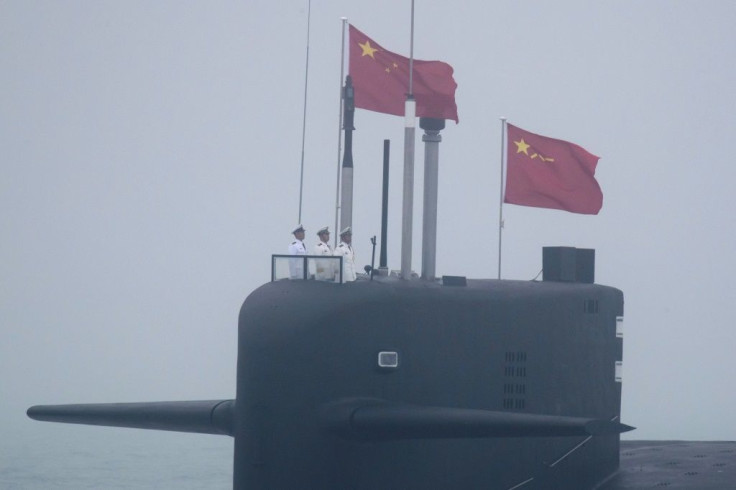East China Sea: Japan Sounds Alarm After Spotting Chinese Submarine, Destroyer Near Its Territorial Waters
KEY POINTS
- Japan's Maritime Self-Defense Force spotted 2 vessels in a contiguous zone
- Neither the submarine nor the ship entered Japanese territorial waters
- Chinese media said Japan had ulterior motives and was hyping the "China threat"
Japan reported the presence of a Chinese submarine just outside its territorial waters Friday morning, adding to the tensions between the two countries over competing territorial claims in the East China Sea.
The submerged Chinese vessel was spotted near the southern Amami Oshima islands, Japan's defense ministry said Sunday. The sub was sailing northwest, and a Chinese Luyang III-class guided-missile destroyer was also spotted in the vicinity, reported Reuters.
The island is part of the Amami archipelago in southwest Japan.
As per the statement, Japan's Maritime Self-Defense Force spotted the vessels in a contiguous zone. However, Defense Minister Nobuo Kishi instructed his staff "gather information and maintain vigilant surveillance with a sense of urgency," the statement said.
Though neither the submarine nor the ship entered Japanese territorial waters, they were in a contiguous zone where vessels are required to identify themselves. Under international law, submarines passing off the coast of another country are required to surface and show a national flag inside territorial waters.
The submarine continued underwater westward in the ocean near Yokoate Island, the ministry said.
Japan’s Maritime Self-Defense Force sent three reconnaissance aircraft and two destroyers to warn off the vessel and to gather information, reported the Associated Press.
Japan has alleged numerous intrusions by the PLA into its airspace and waters. Last month, the Japan Air Self Defense Force scrambled fighter jets three times in a week to monitor Chinese drones that flew over the East China Sea and the strategic Miyako Strait.
In March, two Chinese vessels allegedly entered Japan's territorial waters off the Senkaku Islands in the East China Sea, prompting Tokyo to step up the defense posture in the country's southwestern regions and islands north of the Senkakus. China has claimed sovereignity over the Japanese-controlled islands since 1970s when evidence of oil reserves nearby surface. China has used such incursions to keep the dispute on the boil even as it has militarized islands in the South China Sea where Beijing has made vast maritime claims under what is called the "Nine-Dash Line."
Last week, Japan and Vietnam signed a deal that enabled Tokyo to give defense equipment and technology to Vietnam, as both countries decided to step up their military cooperation amid worries about China's growing military influence in the region.
Meanwhile, the Chinese state-backed Global Times reacted to the Japanese allegations saying it had "ulterior motives" and is again "creating a China threat so it can have more excuses to break its pacifist constitution."
The news outlet, quoting military observers, said said law permitted ships and submarines to sail freely in international waters and there would be "no problem even if Chinese ships did navigate outside of Japanese territorial waters."
According to the report, China's recent naval activities near Japan are aimed at helping safeguard peace and stability in the region by deterring Japanese right-wing forces.

© Copyright IBTimes 2025. All rights reserved.





















